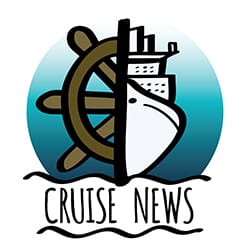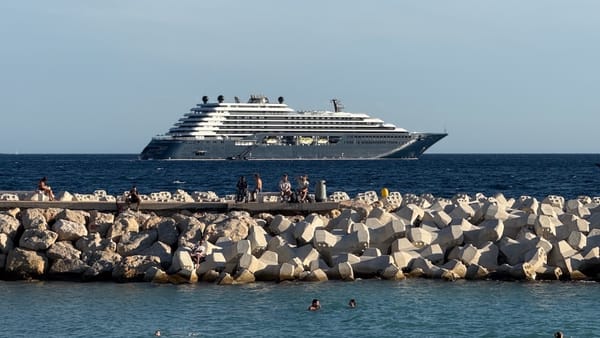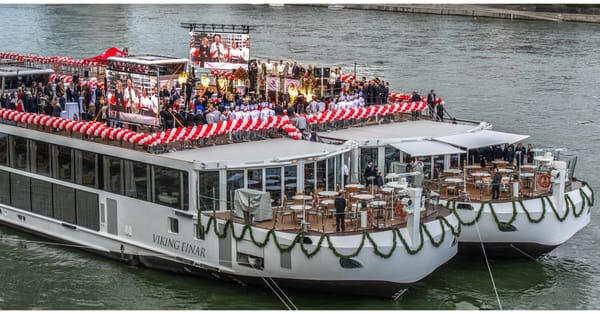Norwegian Cruise Line Faces Steep Stock Drop Amid Ongoing Financial Strains
Norwegian’s sharp stock decline reflects deeper industry pressures and company-specific hurdles, as cruise operators continue to navigate persistent financial risks and uncertain recovery prospects.

Norwegian Cruise Line Holdings (NCLH) has been under significant pressure, with its stock declining 33% year-to-date, notably underperforming the S&P 500’s modest 0.6% decline in the same period. Broader challenges are evident across the cruise industry as Carnival Corporation fell 12%, Viking Holdings dropped 2%, and Royal Caribbean managed a small 3% increase. Norwegian’s latest earnings report highlights a mixed picture that reflects both systemic industry challenges and company-specific vulnerabilities, reinforcing the current unattractive outlook for NCLH stock.
Key Financial Performance Indicators
The company’s Q1 results fell short of Wall Street’s expectations. Adjusted earnings per share (EPS) were $0.07, missing the consensus estimate of $0.09, while revenue totaled $2.13 billion, slightly missing projections of $2.15 billion. Norwegian’s occupancy reached 101.5%, consistent with guidance, but this represented a decline from prior periods, partly due to heightened dry-dock activity. Additionally, the company posted a GAAP net loss of $40.3 million.
Though management acknowledged softening in forward bookings, additional indicators suggested resilient demand, as evidenced by a 2.6% increase in advance ticket sales, which now stand at $3.9 billion. Nevertheless, the company’s broader operational and financial metrics indicate key weaknesses.
Concerns with Valuation and Financial Health
At its current price of approximately $17 per share, Norwegian Cruise Line stock may appear undervalued, but deeper analysis indicates otherwise. While the company’s price-to-sales (P/S) ratio of 0.8 compares favorably to the S&P 500 average of 2.8, and its price-to-free cash flow (P/FCF) ratio of 3.9 is much lower than the benchmark’s 17.6, these metrics are offset by serious structural vulnerabilities:
- Debt Burden: Norwegian has a staggering $13 billion in debt, giving it a debt-to-equity ratio of 163.6%, far exceeding the S&P 500’s 21.5% ratio.
- Low Liquidity: Cash equivalents are critically low, representing only $185 million out of the company’s $21 billion total assets, leaving a cash-to-assets ratio of just 1.0% (versus the S&P 500’s 15.0%).
These financial inefficiencies leave the company highly vulnerable to economic disruptions compared to its competitors.
Market Resilience and Industry Comparisons
Norwegian faced significant losses during recent economic downturns. During the inflation shock of 2022, its stock fell 69.2%, far surpassing the S&P 500’s 25.4% decline. Similarly, during the COVID-19 pandemic, the stock plummeted by 87%, while the broader market declined by 33.9%. This sharp underperformance underscores its limited resilience relative to competitors and the broader market average.
Industry Context
Despite some cruise operators undertaking initiatives to mitigate challenges, such as diversifying itineraries and implementing sustainability measures, the overall industry remains subdued. Additionally, competitive pressures from Carnival and Royal Caribbean further weigh on Norwegian’s potential recovery. For instance, Royal Caribbean has maintained minor but positive stock growth in recent periods, showcasing greater stability than Norwegian.
While Norwegian’s year-over-year revenue growth of 10.9% outpaces the S&P 500’s average increase of 5.3%, quarterly revenues have slipped 3% over the prior year, signaling near-term hurdles as recovery efforts continue.
Profitability is also a mixed story, with operating income for the last four quarters at $1.5 billion (operating margin: 15.5%), slightly above the S&P 500 average of 13.1%. However, these modest margins do not counterbalance larger structural debt concerns.
Investment Outlook
Norwegian’s fundamental challenges, ranging from high leverage to poor liquidity ratios, render its valuation unattractive despite its seemingly low multiples. Furthermore, its vulnerability to market downturns cannot be overlooked, especially as economic uncertainties remain prevalent globally. Investors seeking alternatives may find more stable returns in diversified or value-based portfolios.
As Norwegian, alongside peers, strives to navigate a challenging industry landscape, its current financial position and operational resilience pose significant barriers to sustained recovery and stock performance growth.
Frequently Asked Questions (FAQs)
Why has Norwegian Cruise Line stock declined significantly in 2023?
The 33% year-to-date decline in Norwegian Cruise Line stock reflects a combination of industry-wide challenges, such as weaker demand trends, competitive pressures, and macroeconomic uncertainties, as well as company-specific issues like high debt and liquidity constraints.
What stands out about Norwegian’s financial health?
Norwegian Cruise Line faces significant financial risks, including a high debt-to-equity ratio of 163.6% and a critically low cash-to-assets ratio of 1.0%. This raises concerns about its ability to weather future economic downturns.
How does Norwegian’s performance compare to its competitors?
While Carnival and Royal Caribbean show greater resilience, Norwegian has underperformed considerably due to higher leverage and weaker cash reserves. Royal Caribbean stock, for instance, has posted a 3% gain year-to-date, while Norwegian has seen a sharp decline.
Is Norwegian Cruise Line undervalued?
Though Norwegian’s valuation metrics, such as a price-to-sales ratio of 0.8, suggest it may be undervalued compared to the broader market, its weak financial stability and operational challenges make the stock unattractive for long-term investment at this time.
As the cruise industry works toward recovery following years of turbulence, Norwegian Cruise Line’s financial and operational posture highlights ongoing challenges that may take significant time to resolve.




